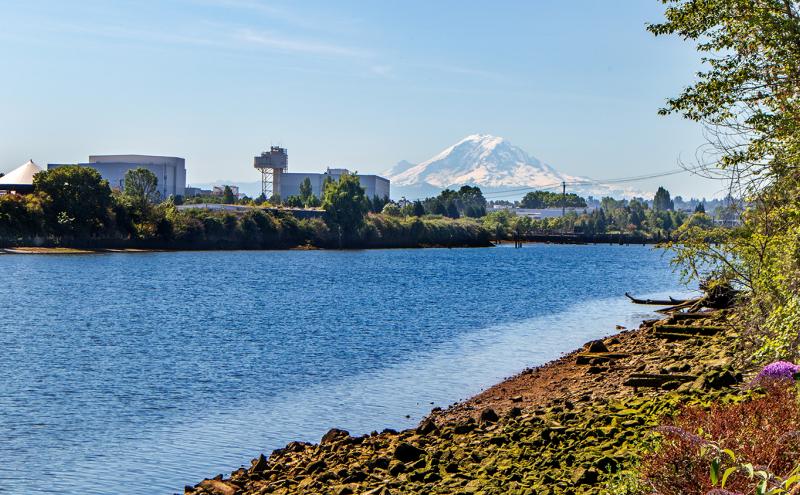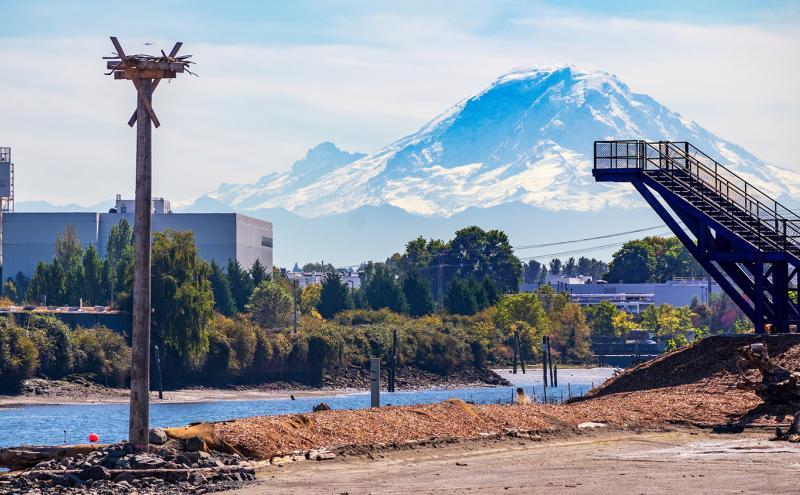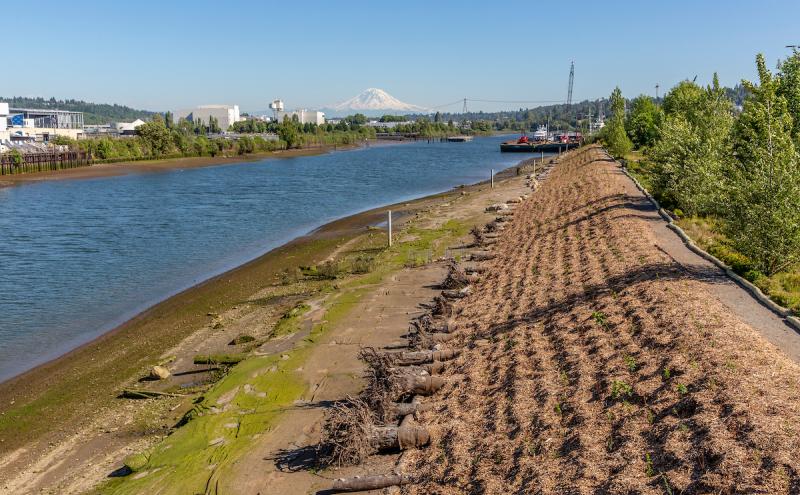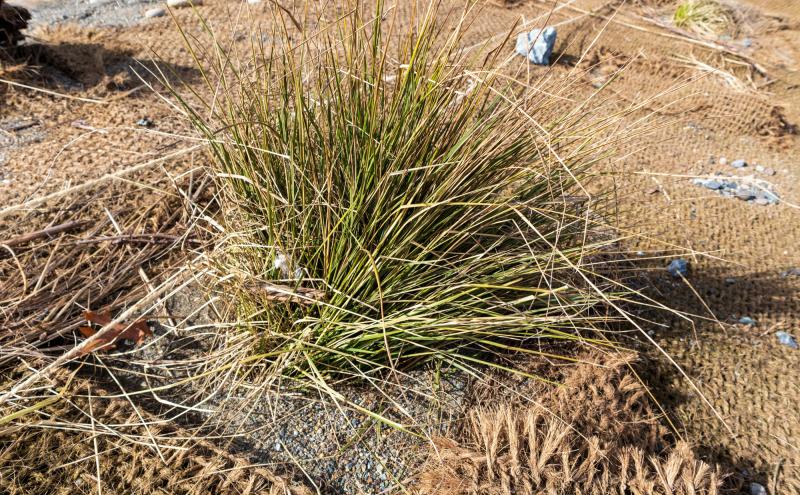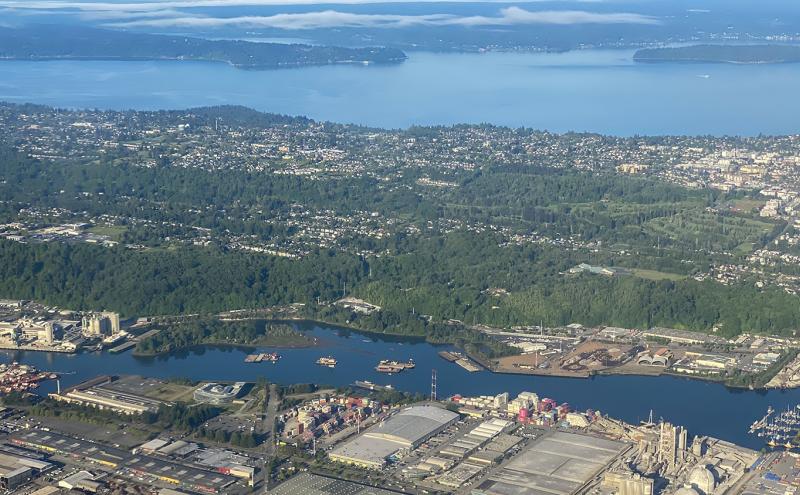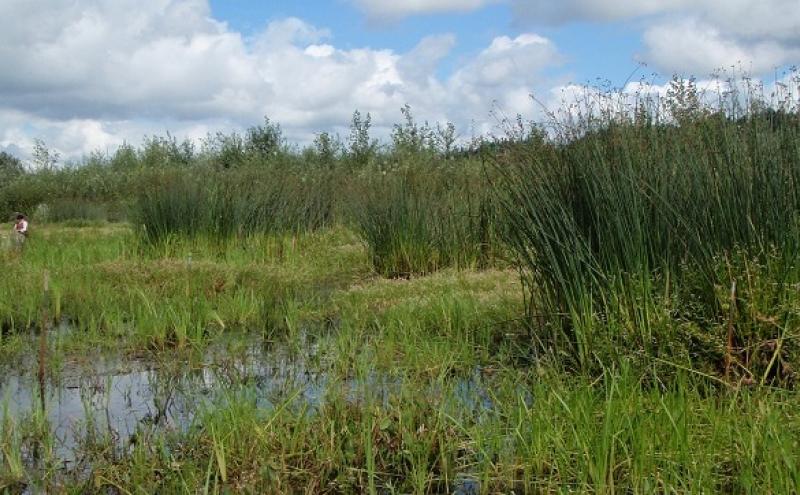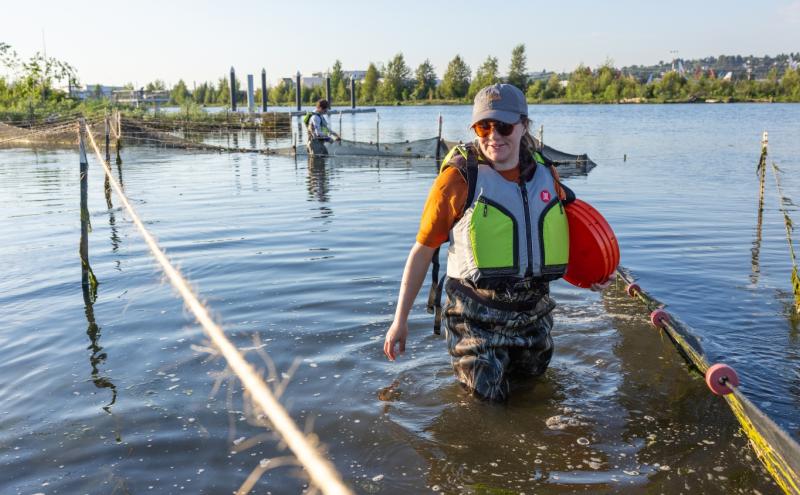
Estuarine habitat recovery is underway on the Duwamish River. One year after opening the Duwamish River People’s Park and Shoreline Habitat (DRPP), the largest restoration project on the Duwamish River in a generation, a team composed of Port of Seattle environmental staff, fish biologists, and University of Washington (UW) researchers found more than 2,500 juvenile salmon and extensive, healthy marsh vegetation.
“Community engagement and environmental stewardship are making a difference for Seattle’s only river and those who live along its shores,” said Port of Seattle Commissioner Ryan Calkins. “There is still so much to do to support a clean and healthy Duwamish River, but we have the right community and environmental experts working together. That powerful collaboration makes me optimistic about our future.”
This year marked the first of 10 years of monitoring the Port will conduct at the site to ensure that the habitat restoration project delivers results. The sampling found:
- Over 2,300 juvenile chum salmon (~2,352)
- Almost 240 juvenile natural-origin Chinook salmon (~237)
- Over 900 non-salmonid fish (922)
- Robust marsh vegetation including bulrush and beachgrass over knee-high and an expanding blanket of wetland emergent plants. Healthy marsh vegetation protects fish from predators, improves water quality, and supports an ecosystem full of food that fish like to eat.
To sample fish, the Port’s team of consultants and researchers deploys a net at the mouth of the marsh basin during high tide to capture any fish as they follow the falling tide out of the marsh basin. The net funnels the fish into a chamber where they are collected, identified by species, measured, and released. The University of Washington is conducting fish sampling that complements the Port’s monitoring efforts. Their sampling techniques include acoustic monitoring using a Dual-frequency Identification Sonar (DIDSON) device to count fish, assess the size of schools, and see where they are throughout the site. The UW sampling also uses pole seine, a technique that uses two poles and a net to capture fish for species identification, measurement, and counting.
“One of the most exciting things that we found so far is that we have natural origin Chinook using this site,” explained Jenn Stebbings, Port of Seattle Environmental Program Manager. “That means the fish are not from a hatchery — they were born naturally in the ecosystem. And now they’re coming to use this site for food and cover as they migrate out into Puget Sound. That’s pretty exciting to have an endangered species come and use a site you’ve built for them.”
Built by the Port of Seattle, Duwamish River People’s Park exists in large part thanks to community support and participation. Since its opening, Duwamish Valley community groups including the Green Jobs Coalition, Duwamish Valley Youth Corps, and Duwamish Valley Sustainability Association have used the site for environmental education and river access. They’ve also partnered with the Port of Seattle on community and student tours and training for careers in green jobs. The Duwamish River Community Coalition hosts the annual Duwamish River Festival adjacent to the park, bringing neighbors and organizations together to celebrate and learn about the many efforts underway to support a clean and healthy Duwamish River.
In total, this project restored 14 acres of habitat, including riparian shrub buffer, emergent marsh, mudflat, and subtidal areas along nearly half a mile of Duwamish River shoreline. The restoration creates valuable off-channel habitat in the saltwater-freshwater transition zone, enhancing a high-priority migratory corridor for Chinook salmon. Park amenities include a 275-foot-long viewpoint pier, several gathering areas, public art, interpretive signs, and a hand-carried boat launch.
The property was formerly home to Duwamish Manufacturing Company and Malarkey Asphalt Company and more recently it was known as Terminal 117 (T-117). Now it is home to a growing natural asset that serves as important habitat as well as an environmental classroom and a community gathering place.
Contact
A gallery of photos and a b-roll reel of the fish sampling event are available here.
Kathy Roeder | Communications Director, Port of Seattle
(206) 787-4882 | [email protected]

